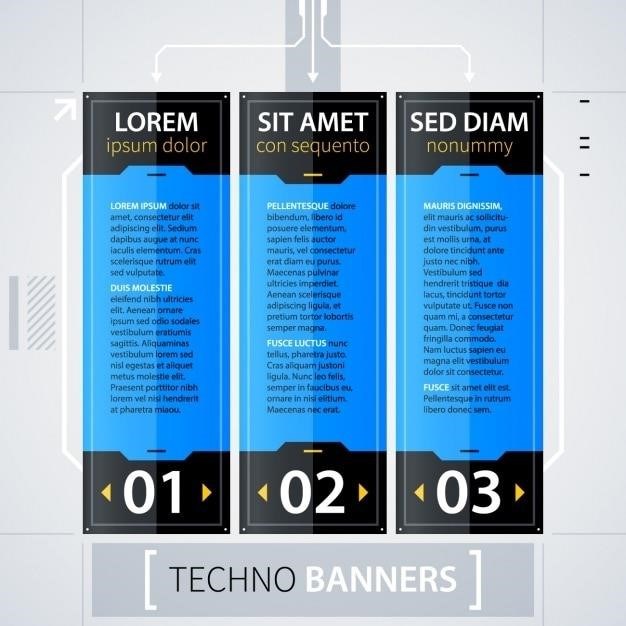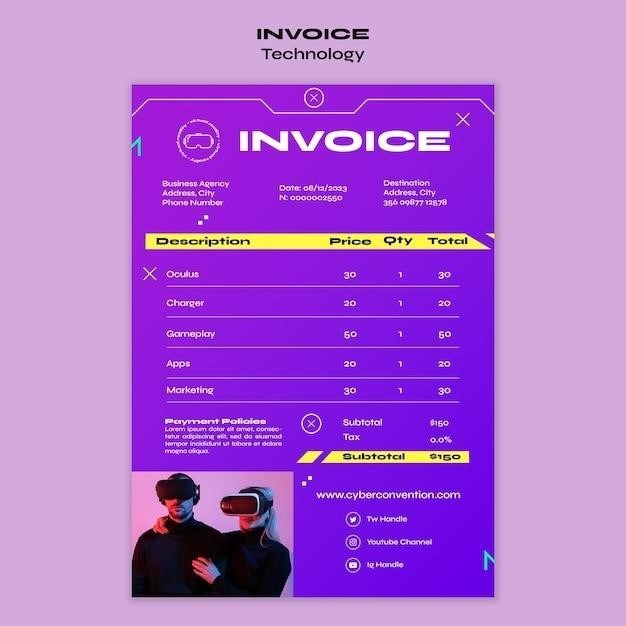BOT-2 Scoring Tables⁚ A Comprehensive Guide
The BOT-2 Scoring Tables are an essential part of the Bruininks-Oseretsky Test of Motor Proficiency, Second Edition (BOT-2) assessment. These tables are used to convert raw scores obtained during the test into meaningful scores, such as scale scores, standard scores, and percentile ranks. These tables provide a standardized way to interpret a child’s performance in relation to their peers, helping professionals understand their motor skills development. The BOT-2 Manual Supplement, item number 58046, contains the Fine Motor and Gross Motor Composite conversion tables. The Fine Motor score conversions tables are 5.3 and 5.4, while the Gross Motor score conversion tables are 5.5 and 5.6. The BOT-2 Scoring Tables are a valuable resource for professionals who use the BOT-2 to assess motor skills in children and adolescents.
Introduction to the BOT-2
The Bruininks-Oseretsky Test of Motor Proficiency, Second Edition (BOT-2), is a widely used and respected assessment tool designed to measure a wide range of motor skills in individuals aged 4 through 21. This comprehensive test provides valuable insights into a person’s fine and gross motor abilities, helping professionals identify areas of strength and weakness, and develop targeted interventions to improve motor function. The BOT-2’s unique approach utilizes engaging, goal-directed activities to assess motor proficiency in a standardized and reliable manner. The test is administered individually, allowing for careful observation and analysis of the individual’s performance. The BOT-2 is a valuable tool for various disciplines, including physical therapy, occupational therapy, special education, and sports medicine, providing a comprehensive evaluation of motor development.
What is the BOT-2 Test?
The BOT-2, or Bruininks-Oseretsky Test of Motor Proficiency, Second Edition, is a standardized, individually administered assessment designed to evaluate a wide range of motor skills in children and young adults aged 4 through 21. It is a comprehensive tool that measures both fine and gross motor abilities, providing a detailed picture of an individual’s motor development. The test encompasses various subtests, each focusing on specific motor skills, including fine motor precision, fine motor integration, manual dexterity, upper-limb coordination, balance, bilateral coordination, running speed and agility, and strength. The BOT-2 uses engaging, goal-directed activities that assess motor skills in a way that is both meaningful and enjoyable for the test-taker. Its purpose is to identify strengths and weaknesses in motor skills, allowing professionals to develop appropriate interventions and support. The BOT-2 is widely used in various settings, including schools, hospitals, and clinics, to evaluate motor development and guide intervention strategies.
Purpose of the BOT-2
The BOT-2 serves a multifaceted purpose in the realm of motor skill assessment. Its primary objective is to provide a comprehensive and standardized measure of motor proficiency in children and young adults. This allows professionals to gain valuable insights into an individual’s motor development, identifying both strengths and weaknesses. The BOT-2 plays a crucial role in diagnosing motor skill difficulties, such as developmental coordination disorder (DCD), which can significantly impact a child’s daily life and academic performance. It also helps to monitor progress during interventions and rehabilitation programs, providing evidence-based data to track improvement. Additionally, the BOT-2 is valuable for planning and implementing individualized interventions tailored to specific motor needs. It can guide the development of targeted therapies, physical education programs, and adaptive activities designed to enhance motor skills and promote overall development. By providing a standardized and reliable measure of motor proficiency, the BOT-2 empowers professionals to make informed decisions that support children and young adults in reaching their full potential.
Areas Assessed by the BOT-2
The BOT-2 comprehensively assesses a wide range of motor skills, encompassing both fine and gross motor abilities. It delves into various aspects of motor development, providing a detailed picture of an individual’s motor proficiency. The test includes eight subtests, each targeting specific motor skills. These subtests are grouped into four motor area composites⁚ Fine Manual Control, Manual Coordination, Body Coordination, and Strength and Agility. Fine Manual Control evaluates fine motor precision and integration, assessing skills like drawing, buttoning, and manipulating small objects. Manual Coordination assesses manual dexterity, upper-limb coordination, and bilateral coordination, focusing on tasks like throwing, catching, and using tools. Body Coordination examines balance, mobility, and coordination, incorporating activities like hopping, skipping, and balancing. Strength and Agility measures strength, speed, and agility, involving tasks like jumping, running, and lifting. By evaluating these diverse motor areas, the BOT-2 provides a comprehensive understanding of an individual’s motor capabilities and identifies areas where intervention may be beneficial.
BOT-2 Scoring Manual
The BOT-2 Scoring Manual is an indispensable guide for accurately interpreting the results of the Bruininks-Oseretsky Test of Motor Proficiency, Second Edition (BOT-2). This manual provides detailed instructions on how to score the test items, convert raw scores into meaningful scores, and interpret the results in a clinically relevant way. The manual outlines a step-by-step approach to scoring, emphasizing the importance of precise measurement and consistent application of scoring criteria. It includes comprehensive tables and charts for converting raw scores into scale scores, standard scores, and percentile ranks, facilitating the comparison of an individual’s performance against age-based norms. The manual also offers guidance on interpreting the scores, providing insights into the child’s strengths and weaknesses in different motor areas. It highlights potential implications of the scores for intervention and program planning. The BOT-2 Scoring Manual serves as a vital resource for professionals who administer the BOT-2, ensuring accurate and reliable scoring and interpretation of the test results.

Scoring Options⁚ Manual Scoring and ASSIST Software
The BOT-2 offers two convenient scoring options⁚ manual scoring and the ASSIST software. Manual scoring, a traditional approach, involves meticulously reviewing the test items, assigning points based on the provided criteria, and manually calculating scores using the BOT-2 Scoring Manual. This method requires careful attention to detail and familiarity with the scoring guidelines, but it offers a hands-on understanding of the scoring process. On the other hand, the ASSIST Software streamlines the scoring process, automating the calculation of scores and providing comprehensive reports. ASSIST simplifies data entry, reduces the risk of human error, and generates clear, concise reports that summarize the child’s performance across various motor skills. The ASSIST Software also offers additional features, such as the ability to track progress over time, compare scores across different administrations, and generate individualized reports for each child. The choice between manual scoring and ASSIST Software depends on individual preferences, resources, and the specific needs of the assessment. While manual scoring provides a deeper understanding of the scoring process, ASSIST Software offers efficiency and accuracy for busy clinicians.
BOT-2 Brief Form
The BOT-2 Brief Form, a condensed version of the comprehensive BOT-2 assessment, provides a time-efficient method for evaluating core motor skills. This abbreviated form is designed to address situations where a full assessment may be impractical or unnecessary, such as in busy clinical settings or when time constraints exist. The BOT-2 Brief Form consists of 12 carefully selected items, representing at least one item from each of the BOT-2 subtests. This strategic selection ensures that the brief form captures a broad spectrum of motor skills, providing a meaningful snapshot of a child’s motor abilities. The BOT-2 Brief Form is particularly valuable for screening purposes, identifying potential motor challenges, or monitoring progress over time in a streamlined manner. It allows clinicians to quickly assess a child’s overall motor proficiency and determine whether further evaluation with the full BOT-2 is warranted. The brief form’s efficiency and effectiveness make it a practical tool for various settings, contributing to the ongoing evaluation and support of children’s motor development.
Understanding BOT-2 Score Conversion Tables
The BOT-2 Score Conversion Tables are the key to unlocking the meaning behind raw scores obtained during the assessment. These tables serve as a bridge between observed performance and standardized scores, allowing professionals to compare a child’s motor skills to those of their peers. The tables are meticulously constructed based on extensive normative data, collected from a large and diverse sample of children. The BOT-2 Manual Supplement provides the specific tables for converting raw scores into various types of scores, including scale scores, standard scores, and percentile ranks. Scale scores represent a child’s performance within a subtest, while standard scores provide a more comprehensive comparison across all subtests. Percentile ranks offer a straightforward way to understand a child’s relative standing within their age group, indicating their position compared to others. By utilizing these tables, professionals can confidently interpret the BOT-2 results, gaining a deeper understanding of a child’s motor abilities and identifying potential areas for support or intervention. The conversion tables are a critical component of the BOT-2 assessment, ensuring accurate and meaningful interpretation of the collected data.
Interpreting BOT-2 Results
Interpreting BOT-2 results involves a multifaceted process that goes beyond simply looking at numerical scores. Professionals need to carefully consider the individual child’s performance within the context of their overall development, medical history, and environmental factors. The BOT-2 provides a comprehensive picture of motor skills, but it’s crucial to understand that scores alone don’t tell the whole story. For example, a child might score within the average range on the BOT-2, but still exhibit difficulties in specific motor tasks relevant to their daily life. Therefore, the interpretation process requires a holistic approach, integrating the quantitative data from the BOT-2 with qualitative observations and insights gathered during the assessment. The results should be interpreted in conjunction with other assessments, such as medical evaluations or observations from parents or teachers. The BOT-2 should never be used as the sole basis for making decisions about a child’s development. Instead, it serves as a valuable tool for understanding a child’s strengths and weaknesses in motor skills, providing a foundation for individualized interventions and targeted support. By using the BOT-2 as part of a comprehensive evaluation and considering the child’s unique circumstances, professionals can effectively guide their development and promote their overall well-being.
The Role of the BOT-2 in Different Fields
The BOT-2’s versatility extends beyond clinical settings, making it a valuable tool across various fields. In education, the BOT-2 helps identify children with motor skill challenges that may impact their participation in physical activities, classroom learning, and overall school experience. This information can guide educators in developing individualized support plans, providing accommodations, and creating inclusive learning environments. In physical therapy, the BOT-2 assists in developing treatment plans tailored to address specific motor deficits. It also enables therapists to track progress over time, ensuring that interventions are effective. The BOT-2 is also utilized in research studies investigating the development of motor skills, the impact of interventions, and the effectiveness of various therapeutic approaches. Furthermore, in sports medicine, the BOT-2 can be used to assess athletes’ motor skills and identify areas for improvement, contributing to their overall athletic performance. The BOT-2’s application in these diverse fields underscores its significance in understanding and addressing motor skills development across the lifespan.
The BOT-2 Scoring Tables, a critical component of the Bruininks-Oseretsky Test of Motor Proficiency, Second Edition, play a crucial role in providing a comprehensive understanding of an individual’s motor skills development. These tables facilitate the conversion of raw scores into meaningful metrics, enabling professionals to interpret results accurately and make informed decisions. By using the BOT-2 Scoring Tables, professionals can effectively identify strengths and weaknesses in motor skills, tailor interventions, and track progress over time. The BOT-2, with its extensive scoring system, empowers practitioners across various fields to effectively address motor skill concerns, promote optimal development, and ensure successful participation in physical activities, academic pursuits, and life in general. The BOT-2 Scoring Tables are indispensable tools for professionals seeking to understand and support motor development, making them an essential resource in the field of assessment and intervention.
